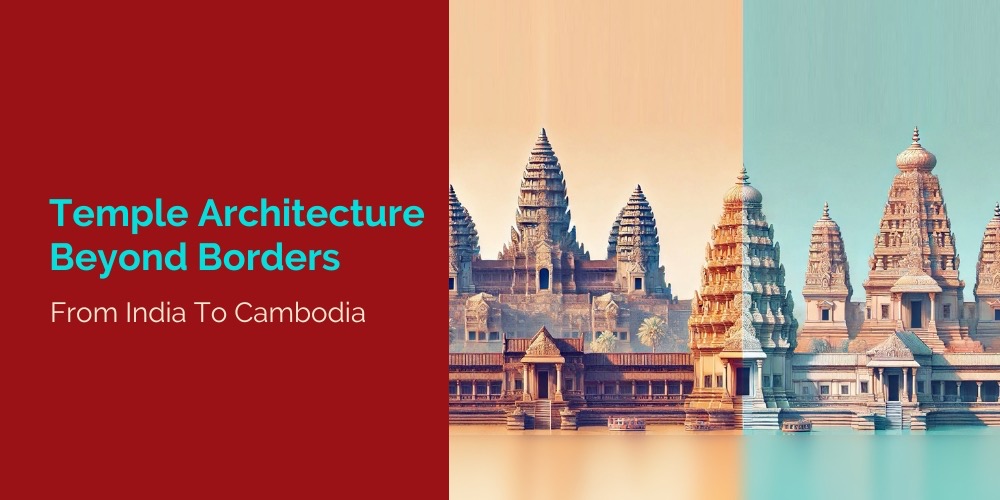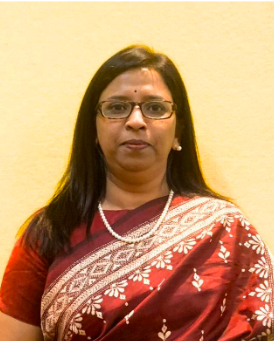
Temple Architecture Beyond Borders From India to Cambodia
Southeast Asia has always been in discussion for temples with very similar characteristics to Indian temples. Temples, an integral Indian concept to symbolize the abode of god, have travelled all across the globe historically. People from various ancient societies adopted this concept into their local traditions and the cultural assimilation resulted in various styles of temples. Ancient Indian society was rooted around religious sites, and the temple became the epitome of cultural identity over time. Rivers, forests, hills, and other natural elements were always part of the cultural landscape with religious significance. Temple became the cultural axis of society and acted as the socio-administrative, religious, cultural, political and educational centres. Understanding the journey of temples, from India to Southeast Asia is a fascinating study. One can understand the spread of Indic culture from the remains of the temples which marks the existence and extent.
Faculty
26 February 2025 - 18 June 2025
7:00 PM-8:00 PM IST
Every Wednesday
Introduction
The course provides a systematic approach to understanding the development of Hindu temple architecture and its profound influence on Southeast Asia, particularly Cambodia. Tracing a 1400-year journey from early rock-cut temples in India to the world’s largest ancient temple complex in Cambodia, it offers a comprehensive exploration of the evolution, spread, and cultural adaptation of temple architecture.
Participants will delve into historical facts, architectural analyses, and diverse perspectives that build a holistic understanding of temples as both an art form and a cultural marker. Through this exploration, participants will gain insight into the rich legacy of Indian temple architecture and its profound influence on Cambodia’s iconic temple complexes, making it a compelling study for anyone interested in the historical and cultural dimensions of temple architecture.
Course Objectives
- Explore the evolution of temple architecture in India
- Understand the indicators for the transmission of knowledge across India and Cambodia
- Explore the development of ancient Khmer temple architecture
- Explore tangible and intangible influences of the temple architecture of India on Cambodia
Course Outcomes
- A wholistic understanding of temple architecture
- An Indian way to appreciate temple architecture
Course Syllabus
- Introduction to Indian Temple Architecture
- Ancient Wonders: Prehistoric and Early Temple Styles
- Regional Diversity: Architectural Styles Across India
- Sculptural Splendor: Iconography and Decoration
- Influence and Legacy: Indian Temple Architecture Beyond Borders
- Cambodia: History and Culture
- Shared heritage between India and Cambodia
- Temple architecture of Cambodia- Khmer architecture
Reading List
- Acharya, Amitav. 2000. The Quest for Identity: International Relations of Southeast Asia. Singapore: Oxford University Press.
- Aasen, Clarence. (1998) Architecture of Siam- A cultural history interpretation. Oxford University Press
- Bhattacharjee, Arun.(1981). Greater India, New Delhi: Munshiram Manoharlal Publishers Private Ltd.
- Briggs, L. P. (1999). The Ancient Khmer Empire. Thailand, White Lotus publications
- Chandler, David. (2008). A History of Cambodia, Westview Press: Boulder, Colorado.
- Coedes, George (1968). The Indianized States of Southeast Asia. Honolulu: East-West Center Press.
- Coomaraswamy A.K. (1972). History of Indian and Indonesian Art. New Delhi: Munshiram Manoharlal.
- David, G. Marr; Anthony Crothers Milner (1986). Southeast Asia in the 9th to 14th Centuries. Institute of Southeast Asian Studies, Singapore.
- Dumarcay, J. and Smithies, M. (1995). Cultural sites of Burma, Thailand & Cambodia. Oxford University press
- Fletcher, B. (1999). History of Architecture. CBS publisher
- Groslier, Bernard-Philippe.(1981). Splendours of the Past: Lost Cities of the Ancient World. National Geographic Society (U. S.) Special Publications Division
- Hall, D.G.E. (1955). A History of South-East Asia. London: Macmillan and Co. Ltd
- Higham, Charls. (2004). The civilization of Angkor. Weitenfell and Nicolson, London
- Hebalkar, Dr Sharad. (2010) Krunvanto Vishmaryam. New Delhi: Akhil bharatiya itihaas sankalan Yojana.
- Jarus, Owen (5 April 2018). “Angkor Wat: History of Ancient Temple”. Live Science. Purch.
- Kulke, H. (2001 Reprinted). Kings and Cults (State Formation and Legitimation in India and Southeast Asia. New Delhi : Manohar
- Majumdar, R.C. (1994) Ancient Indian Colonisation in South East Asia, H. Santiko, Technological Transfer in Temple Architecture from India to Java, in: Utkal Historical Research Journal, Vol. V.
Course Features
- Live Interactive Sessions: Engage in live lectures with opportunities for Q&A.
- Flexible Learning: Access recorded sessions and course materials at your convenience.
- Certificate of Completion: Earn a certificate upon successfully completing the course.
*Important Enrollment Notice: Please note that this course requires a minimum of 15 registrations to commence. If the required number of students is not met, enrolled participants will be notified promptly and provided with options for a full refund or alternative courses.

